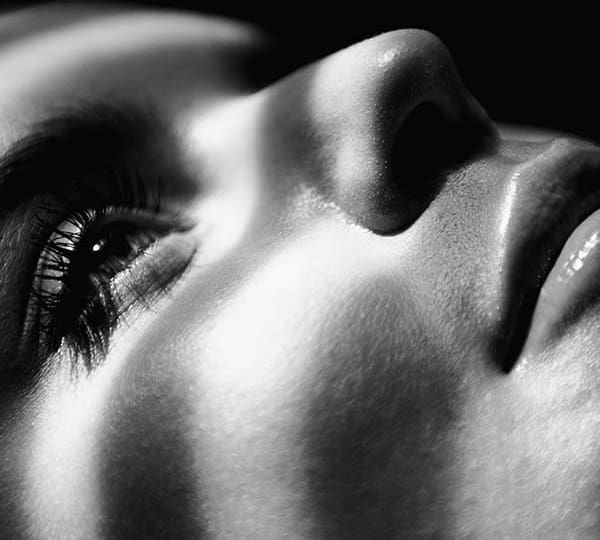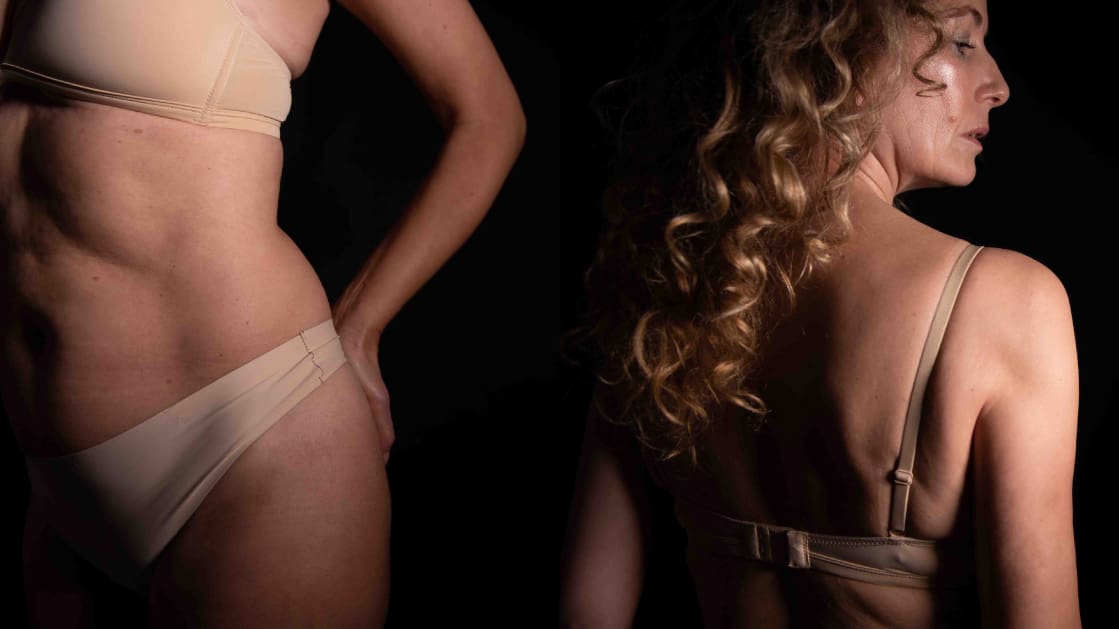McKeown Medical
167 Bath Street, Glasgow, G2 4SQ
Date posted — 8.04.25

Sun exposure is an unavoidable part of daily life – and that’s not a bad thing. When the sun is out, we feel better and brighter about ourselves, so it’s no wonder lots of us crave the sun. But over time, the sun can take a significant toll on the skin. Sun damage, also known as photoaging, can cause premature wrinkles, pigmentation issues, and loss of skin elasticity. Many individuals who have spent years in the sun or using sunbeds may notice their skin appearing older than it should. The good news, however, is that we now have many options to treat sun damage, and our clinic has invested in some of the most sophisticated lasers in the world to do just that.
At McKeown Medical, we specialise in cutting-edge treatments to restore skin health and achieve natural-looking, rejuvenated results. If you’re concerned about sun-damaged skin, this guide will walk you through the signs of damage, risk factors, and the most effective treatments available.
Sun damage can present in various ways, depending on the level of exposure and individual skin type.
Common signs include:
A key distinction is photoaging versus chronological ageing. While natural ageing occurs over time, photoaging is caused specifically by sun exposure and often leads to more pronounced wrinkles, pigmentation, and skin roughness—especially in areas most exposed to the sun, such as the face, neck, and hands. Learn more about the effects of sun damage here.
The main culprit behind sun damage is ultraviolet (UV) radiation from the sun or artificial sources like sun beds. UV rays penetrate the skin and cause:
Most sun damage can be corrected using laser treatments, although it depends on the severity of the damage. Whilst mild sun damage can be reversed by relatively gentle treatments, more severe damage will require more invasive options to get rid of it.
Anyone exposed to excessive UV radiation is at risk of developing sun damage, but some factors increase susceptibility:
Long-term sun exposure can also lead to more serious complications, such as actinic keratosis (pre-cancerous lesions) and an increased risk of skin cancer. This makes it essential to seek professional advice for skin concerns, especially if you notice any new spots or lesions appearing.
At McKeown Medical, we offer advanced treatments tailored to individual skin concerns. Here’s how we can help restore your skin’s health and radiance:
BBL (BroadBand Light) Treatment
Best for: Pigmentation, redness, pores and overall skin tone.
BBL uses intense pulsed light (IPL) to target pigmentation and redness, stimulating collagen production and improving overall skin texture. This is an excellent choice for those looking to correct uneven skin tone without significant downtime. It’s an excellent tool for patients with mild sun damage or in combination with other treatments for more advanced sun damage. Learn more about BBL treatment here.
Halo Laser Treatment
Best for: Deeper pigmentation, fine lines, and sunspots.
Halo laser treatment combines ablative and non-ablative wavelengths to target skin damage at multiple depths. This results in a smoother complexion, reduced pigmentation, and improved collagen levels. You can expect 5 days of downtime after this treatment, during which you can expect your face to be red and puffy. Halo laser is particularly effective for individuals with more moderate to severe sun damage or patients with severe sun damage who do not want to commit to a more invasive option. Click here to find out more about this treatment.
Full Laser Resurfacing
Best for: Severe sun damage, wrinkles, and deep-set pigmentation.
For those with advanced signs of photoaging, especially with deep wrinkles and elastosis, full laser resurfacing offers dramatic skin rejuvenation. This treatment removes damaged outer layers of skin, promoting the growth of fresh, healthy tissue. While downtime is longer than other options – you will need two weeks off work – the results are transformative. Learn about full laser resurfacing here.
Sun damage may be inevitable, but it doesn’t have to be permanent. With the right treatment plan, you can restore a younger, healthier complexion. At McKeown Medical, we pride ourselves on delivering natural results that enhance your confidence.
Want to see real patient transformations? Check out our gallery for examples of our results.
If you’re ready to take the next step in reversing sun damage, book a consultation with our experts today. We’ll help you choose the best treatment plan for your skin.
1 / 2
2 / 2
What a lovely experience. I am delighted with my results. Much better than I expected. Dr McKeown is a genuine down to earth person and explained everything to me before my procedure. Thanks again. Would recommend this clinic to anyone looking for a cosmetic procedure. I intend to come back in a few months’ time for further treatment.
Rosemary Grant January 2024

Another year, another round of incredible transformations from our team at McKeown Medical!
Eye bags banished, jowls lifted, skin refined, veins gone. Thank you so much to all of our patients who have allowed us to share their photos with you and thank you to our incredible team who work so hard to take care of every patient who trusts us with their care.
Here’s to 2026 and another year of incredible transformations!

“But Daddies, WHEN is Santa coming? I want to wait up for him!”
Happy Christmas to all, and to all a good night 🎅🏻

Laser rejuvenation of the eye area can be an incredibly powerful tool for the right patients, especially those whose ‘bags’ are more about loose skin and fine lines, like this lovely patient here.
We treated her with full field ablation, which takes around 2 weeks to recover from. Her she is a few weeks later and you can see how much tighter the skin is, the crepey skin has gone and the fine lines have been ironed out. The patient is over the moon.
What do you think?

Eyelid surgery is one of the most popular procedures we do in the clinic. It’s a great fix for hooded eyes! Excess skin on the upper eyelids can not only create a hooded, heavy appearance but often affects the vision too.
Here’s the very talented @bramhallplasticsurgery discussing how upper eyelid surgery (blepharoplasty) can restore a more open, refreshed look by removing the excess skin and subtly redefining the natural eyelid crease. Scars are hidden within the fold of the eyelid, leaving eyes that look brighter, not “done.”
Do you have any questions about surgery? Ask in the comments or send us a message!

Thank you to our patient for allowing us to share her before and after photos of her upper blepharoplasty.
Excess skin on the upper eyelids can make the eyes appear tired or heavy. This simple procedure restores a lighter, more open look while keeping the result completely natural.
Another fabulous result from the very talented @bramhallplasticsurgery!
What do you think?

We’ve been in our new home for a year now and I thought this would be a good time to remind you just how special it is with a little video tour.
It’s been a remarkable year for us in our new home; we’ve introduced new doctors, new treatments, new services and our team continues to grow from strength to strength - always striving to provide more and better for our wonderful patients.
Enjoy the tour!

About last night… It was time once again for our annual Christmas celebration with this absolute bunch of legends. We were a little earlier than usual this year so we could have has many people available as possible, and the evening did not disappoint.
A few sore heads this morning, but absolutely worth it to celebrate the hard work this team dedicate to our patients day in, day out all year round. I am very proud to have the undisputed best team on the planet. Merry Christmas everyone! 🎄

Fine lines etched into the skin around the mouth - this is a common problem and in this patient`s case she had what we call ‘actinic elastosis’, whereby abnormal bands of elastin build up in the skin as a result of years of previous sun exposure.
When patients have this condition, the gold standard way of dealing with it is fully ablative laser resurfacing. It’s an intense treatment with two weeks of downtime afterwards, but the results are spectacular - just like in this lovely patient.
The after photo is three weeks after the treatment and you can see that the skin is still a little pink, which will continue to fade over the next few months.
The patient is already delighted with the result - what do you think?

It’s beginning to look a lot like Christmas!
At least according to Michael Buble, who’s been on repeat in the clinic this week. The decorations are up and we are officially in ‘our season’. The clinic has been packed with everyone having their skin polished in time to make it on the nice list. If you’ve still to make a pre-Christmas appointment, we’ve still got some spaces left for your festive glow up.
Ho ho ho everyone… It’s time for Santa!!!! 🎅🏻
